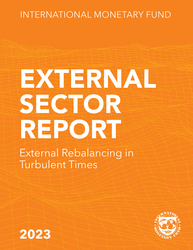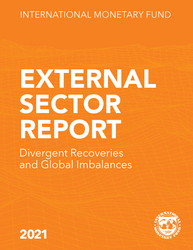
External Sector Report, 2023: External Rebalancing in Turbulent Times
Amid war, the pandemic, and US monetary tightening, excess imbalances widened in 2022, while the US dollar appreciated significantly. Historically, financially driven dollar appreciation has had negative spillovers, which could be alleviated by flexible exchange rates.
READ MORE...
Publication date: July 2023
ISBN: 9798400245688
$50.00
Add to Cart by clicking price of the language and format you'd like to purchase
Available Languages and Formats
| English |
Topics covered in this book
This title contains information about the following subjects.
Click on a subject if you would like to see other titles with the same subjects.
Banks and Banking , Exports and Imports , Finance , Economics- Macroeconomics , International - Economics , Current account , Capital flows , Exchange rate , Global dollar cycle , Spillovers , External sector , dollar appreciation , dollar cycle , commodity exporter , CA deficit , CA surplus , CA gap , Real effective exchange rates , Current account balance , Emerging and frontier financial markets , Global , Africa
Summary
Global current account balances—the overall size of headline current account deficits and surpluses—widened for a third consecutive year in 2022. Main drivers were Russia’s invasion of Ukraine, the uneven recovery from the pandemic, and the rapid tightening of US monetary policy. Concurrently, the US dollar appreciated substantially, and the uphill capital flow reappeared. IMF’s external sector assessments suggest that the overall size of excess current account deficits and surpluses has remained unchanged since 2021, after declining for several years. This highlights the importance of efforts in both excess surplus and deficit economies to promote external rebalancing. The US dollar appreciation under the “global dollar cycle”, which is driven primarily by global financial risks, has negative spillovers on activity and imports that fall on emerging market economies more severely than on advance economies. More flexible exchange rates and more anchored inflation expectations can mitigate negative spillovers to emerging markets.
Copyright © 2010 - 2026
Powered by:
AIDC



